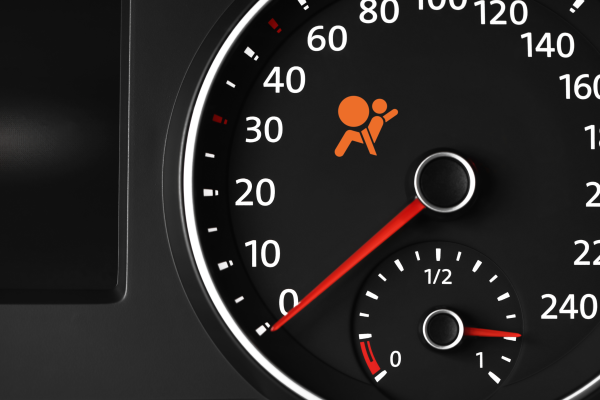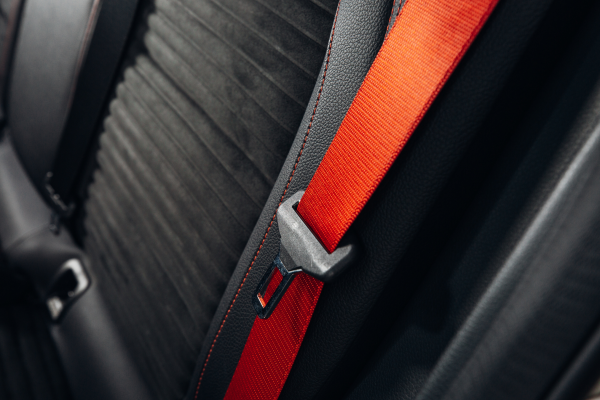Car Safety
Understanding Seat Belts: Composition and Safety Mechanics

The Importance of Seat Belts
Seat belts are one of the most crucial safety features in vehicles, designed to retain people in their seats during a crash and prevent or reduce injuries. They are a primary defense against the converging forces that occur during a vehicular collision. Seat belts save thousands of lives each year, and understanding their composition and the mechanics of their safety features is fundamental to appreciating their role in vehicle safety.
Composition of Seat Belts
Materials Used
The most common material used for seat belts is polyester because of its high tensile strength, resistance to abrasion, and ability to withstand the force of a car crash without stretching excessively. Nylon was also popular in the past due to its similar properties but has been largely replaced by polyester for better performance and durability. The fibers are woven into a tight webbing pattern to distribute force across a broader area of the body during an accident.
Buckles and Retractors
The buckle and retractor are critical components of a seat belt system. Buckles are typically made from sturdy metals like steel, and they include a release mechanism that is both secure and quick to engage in case of an emergency. Retractors, on the other hand, are responsible for removing slack from the belt and keeping it tight against the passenger. Within the retractor, a spring applies a rotating force to the spool to wind up excess webbing, and during a collision, a locking mechanism activates to hold the belt in place.
Safety Mechanics of Seat Belts
Distributing Force
One of the primary safety functions of seat belts is to distribute the force from a collision over the stronger parts of a passenger’s body, such as the pelvis and ribcage. By spreading out the energy over a larger area, seat belts reduce the impact on any single part of the body, thus minimizing injury.
Restraining Passengers
In a crash, unrestrained passengers can be thrust out of their seats, leading to severe injuries or even ejection from the vehicle. A seat belt restrains the passenger, keeping them securely in their seat and within the vehicle’s protective structure. This restraint is essential not only for the safety of the wearer but also for other occupants in the car who could be hurt by someone who becomes a projectile during a crash.
Reducing Impact with Interior Features
Seat belts minimize the likelihood and severity of secondary collisions with the vehicle's interior, such as the steering wheel, dashboard, or windshield. These secondary collisions can be just as dangerous as the initial impact, and being securely belted reduces the energy with which a passenger might strike these surfaces.
Activation During a Collision
Modern seat belts are equipped with pretensioners and load limiters. Pretensioners activate during a crash, retracting the seat belt to remove slack milliseconds before the full force of the collision is felt by the occupants. Load limiters, on the other hand, allow a controlled amount of webbing to spool out once a certain level of force is met to reduce the pressure on the chest and prevent injuries from the seat belt itself.
Advancements and Innovations in Seat Belt Technology
As vehicle safety technology evolves, so do seat belt systems. Innovations now include adaptive belt forces that adjust in real-time to the severity of a crash, adjustable anchor points for better fitment and comfort for occupants of differing sizes, and smart systems that work in conjunction with other safety features to provide comprehensive protection during an accident.
In conclusion, seat belts are a pivotal element in vehicle safety, saving lives through a complex system of materials and mechanisms designed to protect occupants in the event of a collision. Advances in technology continue to improve their effectiveness, ensuring that seat belts remain at the forefront of automotive safety features for the foreseeable future. Understanding the composition and safety mechanics behind seat belts can lead to greater appreciation and consistent usage, which is vital for protecting lives on our roads every day.
Vehicle Safety
Troubleshooting the B1015 Faulty Module Issue
Vehicle Maintenance
Understanding and Fixing Your Car's Service Airbag Light Issue
Vehicle Maintenance
Seat Belt Cleaning Guide: Easy Tips and Tricks for Your Car
The Importance of Seat Belts
Seat belts are one of the most crucial safety features in vehicles, designed to retain people in their seats during a crash and prevent or reduce injuries. They are a primary defense against the converging forces that occur during a vehicular collision. Seat belts save thousands of lives each year, and understanding their composition and the mechanics of their safety features is fundamental to appreciating their role in vehicle safety.
Composition of Seat Belts
Materials Used
The most common material used for seat belts is polyester because of its high tensile strength, resistance to abrasion, and ability to withstand the force of a car crash without stretching excessively. Nylon was also popular in the past due to its similar properties but has been largely replaced by polyester for better performance and durability. The fibers are woven into a tight webbing pattern to distribute force across a broader area of the body during an accident.
Buckles and Retractors
The buckle and retractor are critical components of a seat belt system. Buckles are typically made from sturdy metals like steel, and they include a release mechanism that is both secure and quick to engage in case of an emergency. Retractors, on the other hand, are responsible for removing slack from the belt and keeping it tight against the passenger. Within the retractor, a spring applies a rotating force to the spool to wind up excess webbing, and during a collision, a locking mechanism activates to hold the belt in place.
Safety Mechanics of Seat Belts
Distributing Force
One of the primary safety functions of seat belts is to distribute the force from a collision over the stronger parts of a passenger’s body, such as the pelvis and ribcage. By spreading out the energy over a larger area, seat belts reduce the impact on any single part of the body, thus minimizing injury.
Restraining Passengers
In a crash, unrestrained passengers can be thrust out of their seats, leading to severe injuries or even ejection from the vehicle. A seat belt restrains the passenger, keeping them securely in their seat and within the vehicle’s protective structure. This restraint is essential not only for the safety of the wearer but also for other occupants in the car who could be hurt by someone who becomes a projectile during a crash.
Reducing Impact with Interior Features
Seat belts minimize the likelihood and severity of secondary collisions with the vehicle's interior, such as the steering wheel, dashboard, or windshield. These secondary collisions can be just as dangerous as the initial impact, and being securely belted reduces the energy with which a passenger might strike these surfaces.
Activation During a Collision
Modern seat belts are equipped with pretensioners and load limiters. Pretensioners activate during a crash, retracting the seat belt to remove slack milliseconds before the full force of the collision is felt by the occupants. Load limiters, on the other hand, allow a controlled amount of webbing to spool out once a certain level of force is met to reduce the pressure on the chest and prevent injuries from the seat belt itself.
Advancements and Innovations in Seat Belt Technology
As vehicle safety technology evolves, so do seat belt systems. Innovations now include adaptive belt forces that adjust in real-time to the severity of a crash, adjustable anchor points for better fitment and comfort for occupants of differing sizes, and smart systems that work in conjunction with other safety features to provide comprehensive protection during an accident.
In conclusion, seat belts are a pivotal element in vehicle safety, saving lives through a complex system of materials and mechanisms designed to protect occupants in the event of a collision. Advances in technology continue to improve their effectiveness, ensuring that seat belts remain at the forefront of automotive safety features for the foreseeable future. Understanding the composition and safety mechanics behind seat belts can lead to greater appreciation and consistent usage, which is vital for protecting lives on our roads every day.
Vehicle Safety
Troubleshooting the B1015 Faulty Module Issue
Vehicle Maintenance
Understanding and Fixing Your Car's Service Airbag Light Issue
Vehicle Maintenance
Seat Belt Cleaning Guide: Easy Tips and Tricks for Your Car


